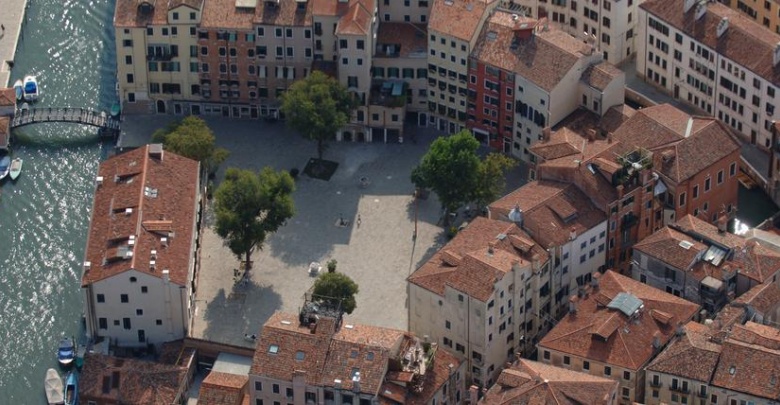It was 29 March 1516. The Serenissima had just ordered that seven hundred or so Jews (of both Italian and German origin) be enclosed in a small isolated area of the city that had once been the site of a foundry. An unhealthy area, it was near the prisons and the monastery of San Girolamo (whose monks were responsible for the burial of executed criminals). Thus the first ghetto in history came into being. The etymology of the name that was to become sadly synonymous with segregation continues to be a matter of debate among scholars.
Some say it derives from the German word gitter (iron grill), from the Hebrew word get (divorce) or again from the German gasse (alleyway). However, the most widely accepted theory is that the word comes from the Venetian verb getar, to smelt.
When the island of the Ghetto Novo was allocated for the Jews of German and Italian origin who had made up the first wave of immigrants, it was already partially inhabited. But the tenants were forced to move out and rents were put up by a third. Gateways were erected on the bridges over Rio San Girolamo and Rio del Ghetto, and the gatekeepers responsible for shutting them at night had to be paid for by the community itself, while other watchmen patrolled the surrounding canals in boats.
During the first few years of the ghetto’s existence the status of the so called nazione todesca (German nation) was clearly defined. Under the direct and exacting control of the Cattaver (Venetian magistrates responsible for the recovery of hidden wealth that was held to be public property), they were required to run the ghetto loan banks and pay a heavy annual tax. Strazzaria (dealing in second-hand cloth and clothing) and general trade in second-hand objects were the only other business activities allowed them, except for the medical profession and the lucky few jobs in printing Hebrew texts.
The arrival of Napoleon’s troops and the demolition of the ghetto gateways in July 1797 marked the end of segregation. Even with the arrival of the Austrians after the treaty of Campo Formio the Jews were no longer obliged to live within an enclosed area of the city: they were permitted to own land, practise the liberal professions, join the army, attend public schools, work as state employees and belong to cultural institutions.
The age of emancipation saw the Jews playing a leading part in the Risorgimento. The community supplied not only considerable financial backing but also some of the government ministers for Daniele Manin’s Repubblica Veneta – men like Isacco Pesaro, Jacopo Treves and Leone Pincherle. The spiritual leader of the Venice community, Rabbi Lattes, actually exhorted Jews to join the Guardia Civica.
After the Veneto had been annexed to the Kingdom of Italy in 1866 the story of the Jews in the city was similar to that of communities throughout the country. By the end of the 19th century many families were living outside the ghetto, which had, however, remained the centre of the community’s life (there were a kindergarten, a school, a Cuore e Concordia club, an old people’s home and a bakery for unleavened bread)
Information of the Museum: http://www.museoebraico.it/english/informazioni.html

